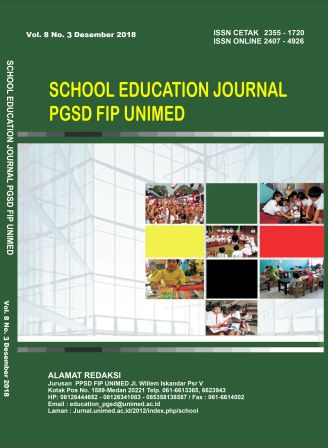UPAYA MENINGKATKAN HASIL BELAJAR PENDIDIKAN AGAMA ISLAM MELALUI PENERAPAN METODE PEMBELAJARAN DEMONSTRASI DI KELAS VII-1 SMP NEGERI 2 BINJAI KAB. LANGKAT
DOI:
https://doi.org/10.24114/sejpgsd.v8i3.11412Abstract
The purpose of this study was to determine the increase in Islamic education learning outcomes on the subject of plural prayer and Qashar through the application of demonstration learning methods in class VII-1 of Binjai District 2 Middle School. Langkat. This research design is a Class Action Research using the Kemmis and Taggart research model, which is spiral from one cycle to the next. The results of this study are: 1) In Cycle I the implementation of the learning model Demonstrations obtained student learning outcomes from 26 students obtained 19 people who completed 73.1% and 7 people who did not complete with 26.9%. 2) In the second cycle student learning outcomes from 26 students were obtained 23 people who completed 88.5% and 3 people who did not complete with 11.5%. From the findings of this study it can be concluded that the application of demonstration learning methods can improve the learning outcomes and skills of plural prayers and qasar of class VII-1 students of SMP Negeri 2 Binjai, Kab. Langkat.Keywords: Learning Model, Demonstration, PAIDownloads
Published
Issue
Section
License
Authors whose manuscripts are approved are approved as follows:
The publication rights for all journal manuscript materials published/published on the SEJ (School Education Journal) E-Journal site are held by the editorial board with the author's knowledge (moral rights remain with the manuscript authors).
The formal legal requirements for accessing this electronic digital journal article are subject to the terms of the Creative Commons Attribution-ShareAlike (CC BY) license, which means that E-Journal SEJ (School Education Journal) has the right to store, transfer media/format, manage in the form of a database, maintain, and publish articles without asking permission from the author as long as the author's name remains as the copyright owner.
Manuscripts published/published electronically are open access for educational, research, and library purposes.

